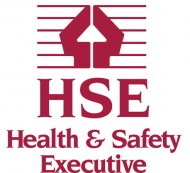
The block salt softener everyone's raving about... The
Crown and the Crown Ultra - We'll we're going to review them since we've fitted and tested a bunch of them!
Hopefully we'll address some questions you may have about this softener brand too.
OK, a bit about us - you wouldn't want to take advice from just anyone now, would you? - We're
water treatment professionals - so when talking chemistry, we think this softener is one of the greatest for
softening your water at home since it softens even the hardest water we've come across.
Being a 'duplex' softener, they run around the clock, and since they run on block salt, you'll never wonder whether its time to top up on salt or not, unlike some traditional softeners - it'll be completely obvious! Since it's quite easy to damage a softener if you forget to top-up with salt, the block salt softeners are definitely the best ones.
Of all of them, these are super easy to fit too - they only require a
DIY fitting kit that you could buy for about £30-£70 extra, and (helpfully) fitting a softener couldn't be easier with all the tutorials and manuals you can get a hold of on the internet. (Pssst, by the way, we'll upload a few fitting videos for y'all soon...)
The Crown is manufactured in the UK, and promises quality and affordability - bearing in mind this machine will last several years, usually coming with a long warranty which makes the prices look even more tempting, but there are other excellent benefit to investing in this particular model...
Softeners, in general, save money by reducing the amount of cleaning products you use; for example, when having a bath, and shampooing your hair, you would only need to use a small amount with soft water since it suds-up really quickly - or when doing the washing up, and the bubbles just disappear with hard water... or when your scrubbing scale off your shower with an expensive descaler product...
The Crown softens even the hardest water, reducing the use of your household cleaning product use to the maximum amount. What we're getting is that, across the softeners lifetime with you, it will have paid for itself !
There are a million good things about this softener we could talk about! Including an amazing flow rate, and the benefits your skin hair and nails feel when bathing in soft water... The only thing I would ever pick on, is the fact that the size of the unit only makes it applicable to homes that have around 1-2 bathrooms.

But I guess I cant complain about that anymore since they brought out the
Crown Ultra - a nice big softener for large homes, that has the same benefits.
If you're thinking about a softener, we would have to give this one 10/10. It's simply brilliant.




















